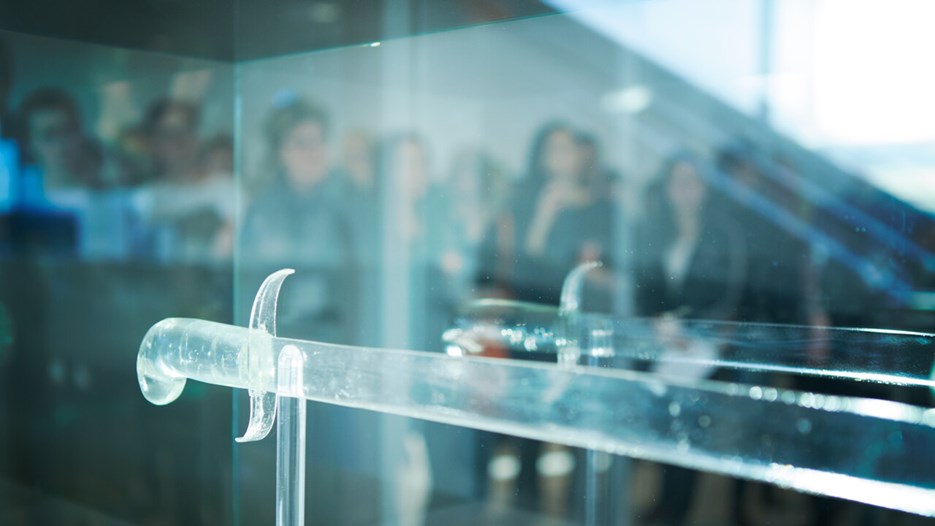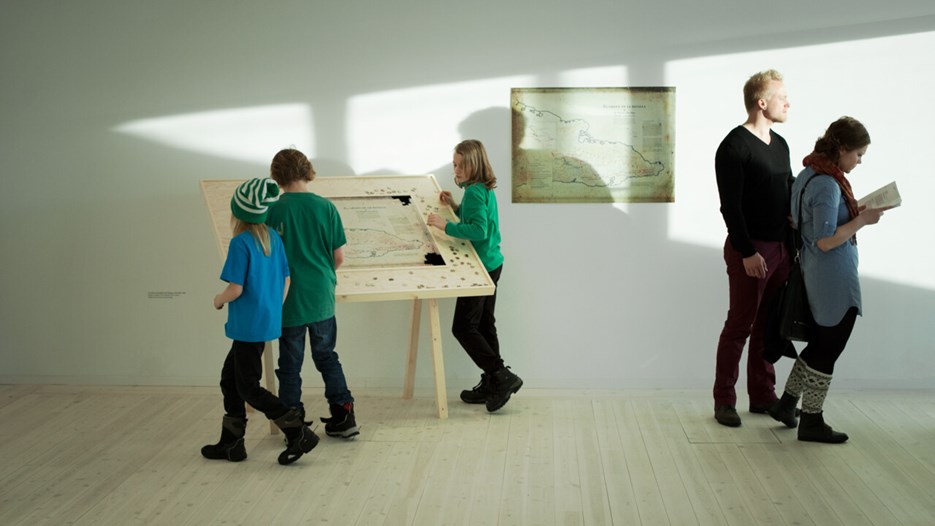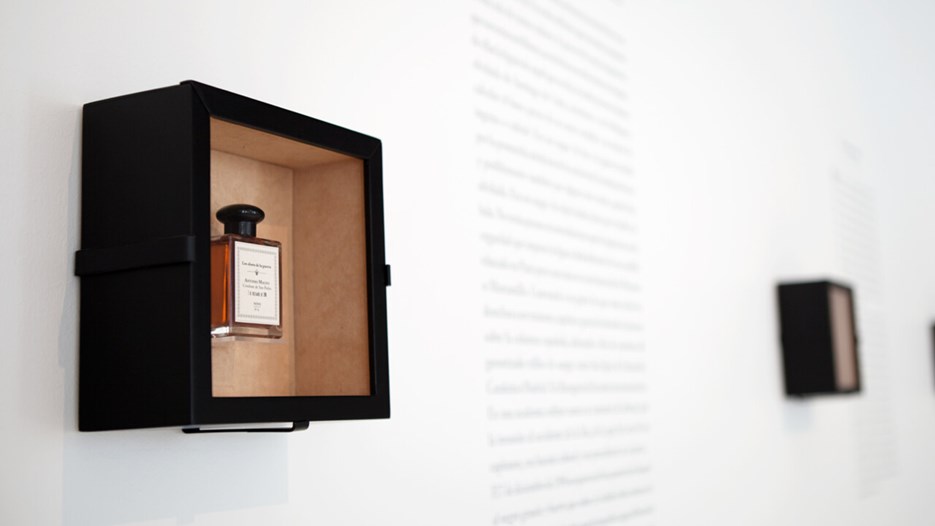
Reynier Leyva Novo / El polvo, la sangre, el sueño común, Bildmuseet, 2013

Reynier Leyva Novo / El polvo, la sangre, el sueño común, Bildmuseet, 2013

Reynier Leyva Novo / El polvo, la sangre, el sueño común, Bildmuseet, 2013
With a great interest in the history of his country, Reynier Leyva Novo explores, questions and stages different versions of Cuba's past. He focuses in particular on the period around the liberation from Spain in 1898. El deseo de morir por otros(The desire to die for others) consists of casts of weapons used in various battles. Another art piece, Los olores de la guerra(the smells of war), consists of a number of perfumes named after generals and the places where they led their troops. These pieces of art can also be interpreted in relation to the current socialist society of Cuba and its strong nationalism.
Reynier Leyva Novo (born 1983) lives and works in Havanna. He has participated in several exhibitions in Cuba as well as at the Venice Biennale (2011), the MARTE (Museum of Contemporary art) San Salvador, El Salvador (2011), the Liverpool biennial, UK (2010); A gentil carioca, Rio de Janeiro, Brazil (2008). This is the artist's first solo exhibition outside of Cuba.
The title El polvo, la sangre, el sueño común translates to: The Dust, the Blood, the Common Dream.
Reynier Leyva Novo / El polvo, la sangre, el sueño común is exhibited at Bildmuseet February 24 - May 26, 2013. Here is a brief presentation of the works included in the exhibition.
El patriota invisible, 2007
[The Invisible Patriot]
DVD 8:45 min.
Collection from the National Museum of Fine Arts, Havana, Cuba
Musical interpretation and production: Gerald Moya
Sound and image recording: Alejandro Lugo
El patriota invisible is a contemporary interpretation of La Bayamesa, the Cuban national anthem, composed in 1867 by Perucho Figueredo. Before it became an official national anthem and adopted a more formal character, the melody was whistled and sung as an expression of patriotism. The artist Reynier Leyva Novo asked the young Cuban musician Gerald Moya to produce a variation on the original score. In the video El patriota invisible, fragments of a guitar neck are seen with fingers forming chords on the strings, set against a black background. The work pays homage to anonymous heroes, the unknown and unnoticed individuals who shape history.
Los olores de la guerra, 2009
[The Smells of War]
Scents, glass bottles and vinyl lettering
These perfumes have been concocted from characteristic fragrances from three encounters during the Cuban War of Independence in the 1800s: Jimaguayú (Ten Years' War, 1868-1878), Dos Ríos and San Pedro (La Guerra del 95, 1895-1898). The artist chose to create fragrances reminiscent of these specific battles as three of the country's greatest leaders fell in these conflicts; Major General Ignacio Agramonte y Loynaz, Major General and President of the Republic José Martí and Lieutenant General Antonio Maceo.
El orden de la batalla I (De Playitas a Dos Ríos), 2013
[The Order of Battle I (From Playitas to Dos Ríos)]
Digital print
Map of the battle of Dos Ríos (19 May 1895), in which the Major General and President of the Republic Jose Martí fell. The artist has created the map in collaboration with a military strategist, a cartographer, a botanist and a group of historians that specialise in the Cuban War of Independence.
El deseo de morir por otros, 2012
[The desire to kill for others]
Weapons cast in epoxy resin
Collection Museo Nacional de Bellas Artes, Havana, Cuba
In his work El deseo de morir por otros, Reynier Leyva Novo wants to evoke a critical interpretation of Cuba's strong nationalism. The original weapons on which these casts are based belonged to the distinguished Cuban commanders, majors and generals during the 1800s. These included Francisco (Panchito) Gómez Toro, Carlos Manuel de Céspedes, Calixto García, José Martí, Antonio Maceo, Quintín Banderas, Manuel Sanguily and Máximo Gómez. These people have unquestionably played a very significant role in Cuba's collective memory. The artist's remoulding of their weapons - to cast them in transparent material and display them as art in an exhibition - compels the observer to question the view of the nation's heroes.